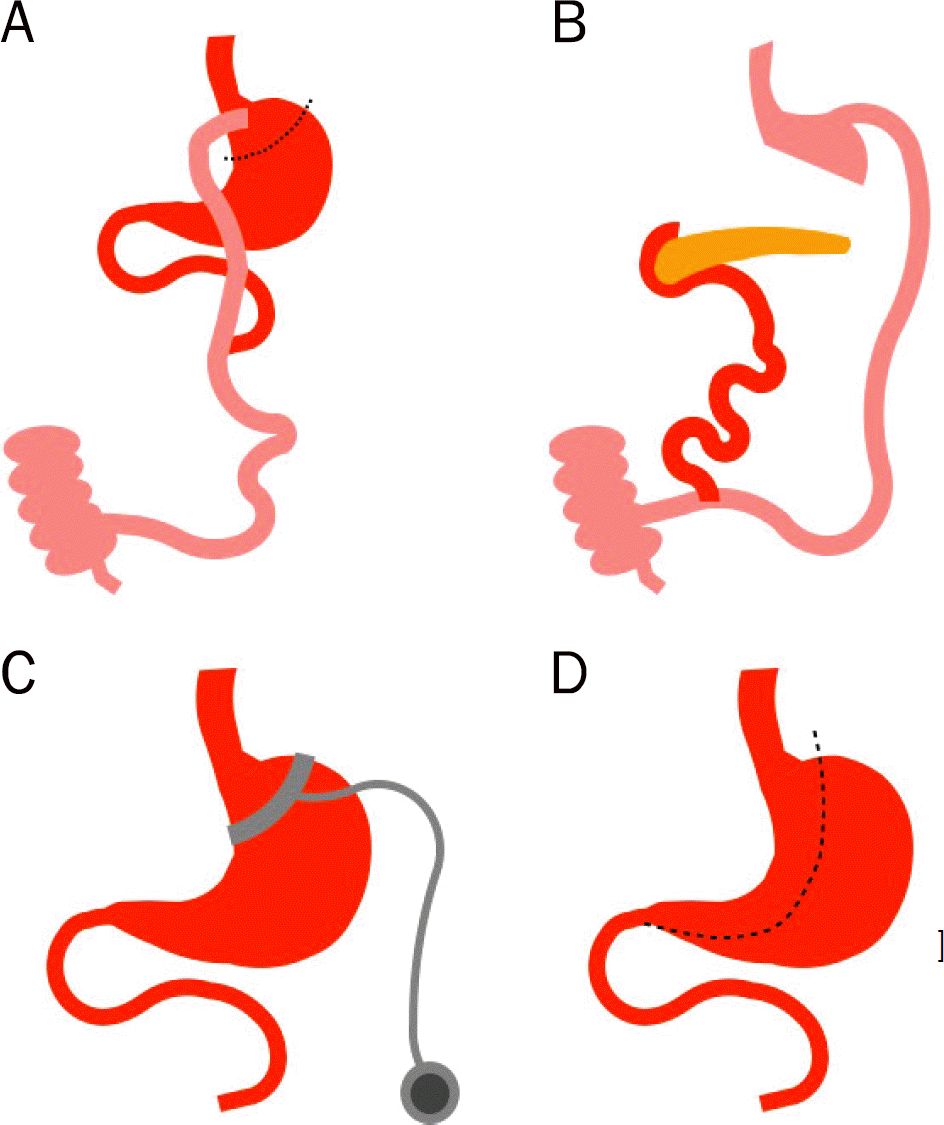Abstract
Obesity is a serious disorder that increases morbidity and mortality. Primary intervention with life style modification and medication is not always effective for obese patients. Endoscopic management of obesity may be a less invasive, more cost-effective, and relatively safer option than bariatric surgery. Moreover, therapeutic endoscopy is considered to be the primary modality for managing complications that occur after bariatric surgery. In the near future, role of gastroenterologists will be more important in the management of obesity and its related problems.
Go to : 
References
1. Kim MK, Lee WY, Kang JH, et al. 2014 clinical practice guidelines for overweight and obesity in Korea. Endocrinol Metab (Seoul). 2014; 29:405–409.

2. Zheng W, McLerran DF, Rolland B, et al. Association between body-mass index and risk of death in more than 1 million Asians. N Engl J Med. 2011; 364:719–729.
4. Dibaise JK, Foxx-Orenstein AE. Role of the gastroenterologist in managing obesity. Expert Rev Gastroenterol Hepatol. 2013; 7:439–451.

5. Jung HS, Choi MG, Baeg MK, et al. Obesity is associated with increasing esophageal acid exposure in Korean patients with gastroesophageal reflux disease symptoms. J Neurogastroenterol Motil. 2013; 19:338–343.

6. Behary J, Kumbhari V. Advances in the endoscopic management of obesity. Gastroenterol Res Pract. 2015; 2015:757821.

7. Gaur S, Levy S, Mathus-Vliegen L, Chuttani R. Balancing risk and reward: a critical review of the intragastric balloon for weight loss. Gastrointest Endosc. 2015; 81:1330–1336.

8. Abu Dayyeh BK, Eaton LL, Woodman G, et al. A randomized, multicenter study to evaluate the safety and effectiveness of an intragastric balloon as an adjunct to a behavioral modification program in comparison with a behavioral modification program alone in the weight management of obese subjects. Gastrointest Endosc. 2015; 81:AB147.
9. Su HJ, Kao CH, Chen WC, Chang TT, Lin CY. Effect of intragastric balloon on gastric emptying time in humans for weight control. Clin Nucl Med. 2013; 38:863–868.

10. Fogel R, De Fogel J, Bonilla Y, De La Fuente R. Clinical experience of transoral suturing for an endoluminal vertical gastroplasty:1-year follow-up in 64 patients. Gastrointest Endosc. 2008; 68:51–58.
11. Familiari P, Costamagna G, Bléro D, et al. Transoral gastroplasty for morbid obesity: a multicenter trial with a 1-year outcome. Gastrointest Endosc. 2011; 74:1248–1258.

12. Foschi D, Corsi F, Lazzaroni M, et al. Treatment of morbid obesity by intraparietogastric administration of botulinum toxin: a randomized, double-blind, controlledstudy. Int J Obes (Lond). 2007; 31:707–712.
13. Topazian M, Camilleri M, Enders FT, et al. Gastric antral injections of botulinum toxin delay gastric emptying but do not reduce body weight. Clin Gastroenterol Hepatol. 2013; 11:145–150.e1.

14. Lee SK. Current status of laparoscopic metabolic/bariatric surgery in Korea. J Minim Invasive Surg. 2015; 18:59–62.

15. Keith JN. Endoscopic management of common bariatric surgical complications. Gastrointest Endosc Clin N Am. 2011; 21:275–285.

16. Ellsmere JC, Thompson CC, Brugge WR, et al. Endoscopic interventions for weight loss surgery. Obesity (Silver Spring). 2009; 17:929–933.

17. Patel JA, Patel NA, Piper GL, Smith DE 3rd, Malhotra G, Colella JJ. Perioperative management of cholelithiasis in patients presenting for laparoscopic Roux-en-Y gastric bypass: have we reached a consensus? Am Surg. 2009; 75:470–476.

Go to : 




 PDF
PDF ePub
ePub Citation
Citation Print
Print




 XML Download
XML Download